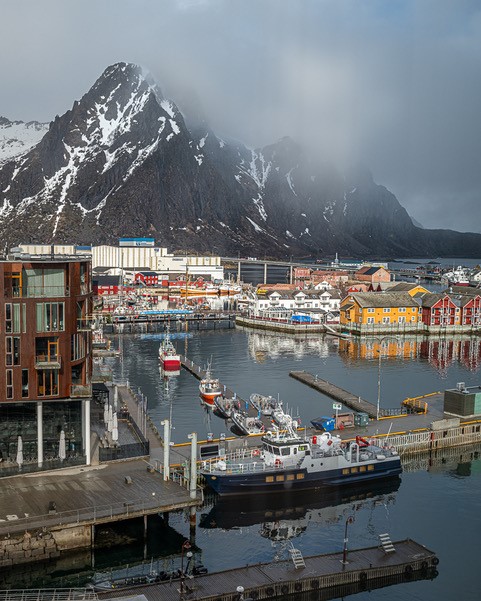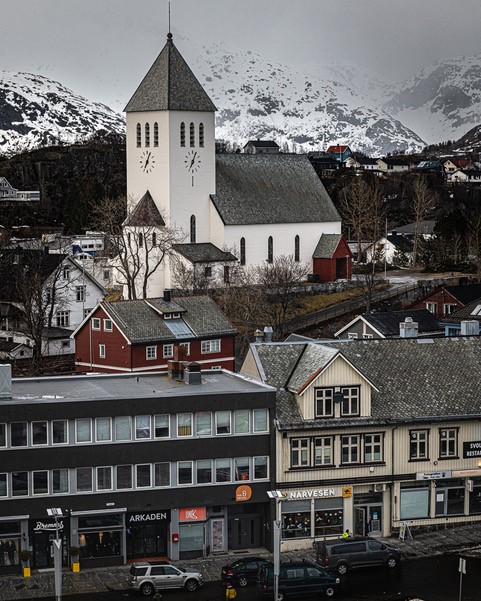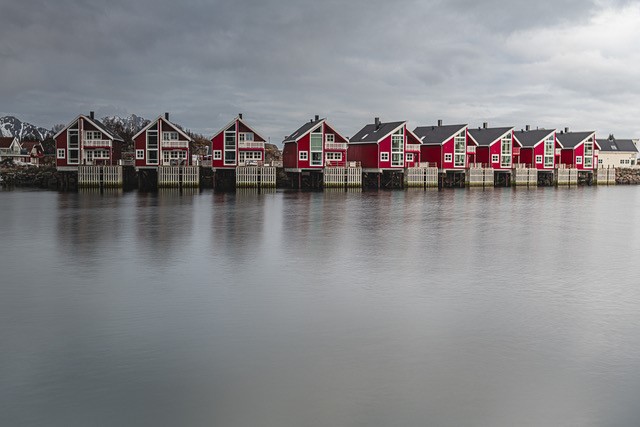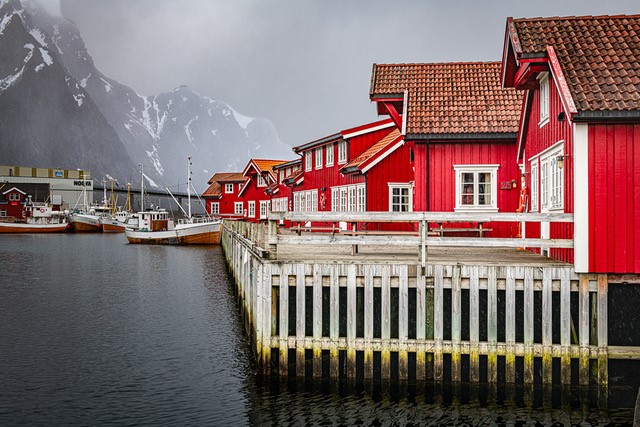We enjoyed the first of two tours around the northern half of the Lofoten Islands today. Lofoten consists of seven main islands; today we explored three. Svolvaer, the ‘capital’ of Lofoten, is on the most northerly.
The islands are connected by a single road, with bridges built in the early 1960s. Parts of the road which followed up steep cliffs are gradually being replaced with tunnels. Lofoten does not use road salt in the winter because it is bad for the environment and bad for the vehicles. The most important reason to avoid road salt, though, is that wild animals, mainly moose, can be easily hit by cars as they lick the salt on the road. Lofoten diligently plows and spreads gravel, and all vehicles must use studded tires during the winter months.
For six weeks mid-winter the sun never rises. And for six weeks mid-summer, the sun never sets. Today was windy and chilly, about 2 deg C, with alternating partial sunshine and thick snow flurries.
Here’s a short video of some of the places we saw today. The last minute or so shows a cod hanging rack. The cod fishery is busy during the winter months as the cod move from the cold water of the sea into the warmer waters between the islands. The catch is preserved as ‘stockfish’, whereby the tails of two fish are tied together and the pair of fish are hung over rails, heads down, to dry. After two months or so they are put into storage or exported. The heads are mostly sent to Italy, and Nigeria is the prime destination for the dried carcasses.
Here are four beautiful pictures taken by my travel-mate Rob Mee. You can see all of his amazing travel photos on his website, focusonmee.com.



